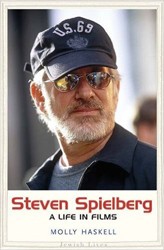Billed as the biography of movie magnate William Fox, this meticulously researched volume could serve as a biography of the movie industry itself. Vanda Krefft uses Fox’s life story, from his boyhood on the streets to his creation of a motion picture empire, to describe the development of this iconic, modern American industry.
William Fox, born in 1879, started working in the garment industry as a child to support his family when his father wouldn’t — a paterfamilias role he continued into his old age (and a plot he favored in his films). The purchase of a nickelodeon parlor marked his first foray into the entertainment industry, followed by a solid career producing silent films, before pioneering the production of sound films. As an early producer, Fox controlled key aesthetic issues — what material to film, which directors and actors to hire, and what size budget to spend. He also took the lead in the organization of motion picture exhibition — the leasing, purchasing, and building of theaters, and the licensing agreements determining the films a theater could show. By the end of his career, Fox had become a key player in the evolving motion picture industry, competing with other studios and integrating with the financial industry to leverage funding for larger and larger production budgets.
While covering Fox’s major accomplishments, Krefft includes lesser-known, intriguing diversions. An early experimenter with “on location” filming (his 1916 A Daughter of the Gods, filmed in Jamaica, has its own chapter), Fox also pioneered the worldwide distribution of American films. To introduce sound films to audiences, he developed his immensely popular newsreels, which played before the silent feature. He even filmed surgical procedures for doctors in training.
For the first half of the book, Krefft focuses on Fox’s budding entrepreneurship. Since his early films are lost, she includes plot summaries, as well as production gossip and backstories on the actors. She gives a sense of the themes Fox favored — bad fathers, saintly mothers, true love reigning supreme — and how he dealt with his associates (he preferred to take the high ground, when possible). But as Fox’s role shifted from hands-on film production to running a multimillion dollar business, Krefft’s focus shifts to the banking system and the stock market. As the Great Crash of 1929 loomed, clouds of bankruptcy gathered around the heavily-leveraged firms of the movie industry.
Like Fox, readers start drowning in red ink. To her credit, Krefft gives deft explanations of various financial maneuvers — short selling, margin calls, etc. Yet, like Fox, we might wish we were still focused on the movies.
In Fox’s last, sad years, his young niece asked him how he could still believe in God. Fox told her the story of the kid who tells his friend that God has answered his prayers for the bike, the skates, and the pony he wanted. “So where’s the stuff?” his friend asks. “The answer was ‘no,’” the boy says. It’s a small story that captures Fox perfectly.
Bettina Berch, author of the recent biography, From Hester Street to Hollywood: The Life and Work of Anzia Yezierska, teaches part-time at the Borough of Manhattan Community College.





